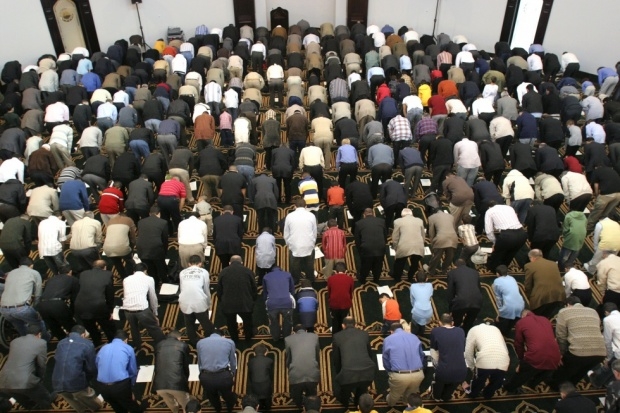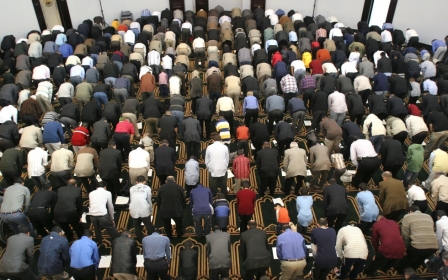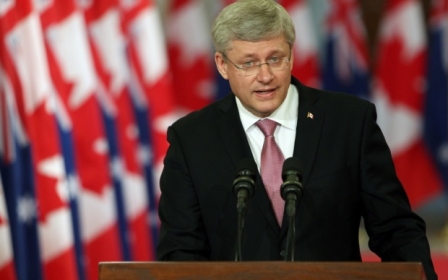BOOK REVIEW: Is there a case for Islamo-Christian civilisation?

The case for Islamo-Christian civilisation
by Richard Bulliet
Published by Columbia University Press (ISBN-10: 0231127979, ISBN-13: 978-0231127974, Release date: 1 February 2006)
With the opening of a new phase in the West's War on Terror and ISIS' rampage through Iraq and Syria, centuries old tensions between Christians and Muslims appear to have reached new heights. Richard Bulliet offers a solution in The case for Islamo-Christian Civilisation, but is it actually coherent?
New MEE newsletter: Jerusalem Dispatch
Sign up to get the latest insights and analysis on Israel-Palestine, alongside Turkey Unpacked and other MEE newsletters
Bulliet begins by highlighting the inadequacies of Samuel Huntingdon’s Clash of Civilisations phraseology, which proposed that there is a clash between the Worldwide Muslim community and the Christian West. He shows that such an historical overview distorts the true nature of the relationship between Islam and Christianity, emphasising differences and ignoring commonalities. Rather than being two disparate civilisations at loggerheads, he argues that Christianity and Islam are in fact fraternal twins and a part of a single Islamo-Christian Civilisation, exhibiting similar historical trajectories and developments, and confronting similar challenges.
Bulliet’s theory seems perplexing since there was a difference of seven centuries between the founding of each respective religion. However, he shows this age gap to be largely irrelevant asserting that it was only up until the seventh century onwards that conversions to Christianity, particularly in Northern Europe, began to gather pace, concurrent with the conversion process in Islam. Furthermore, both faiths experienced a parallel growth in religious specialists from about the ninth-century onwards; Christian monks, and Muslim ulama, ‘possessors of religious knowledge’, as well as a comparable phenomenon of popular heterodox religious movements proliferating. Before the two fraternal twins were to eventually part from about 1500 onwards, close contact between Muslims and Christians in both the Crusader states and in Spain allowed Christians to adopt Muslim Philosophy, Science, and innovation and bring it back to Europe, helping to found the modern world.
Bulliet recognises how problematic narrowly defined concepts are, stating that the term ‘Judeo-Christian civilisation’ is inaccurate because it refers to a relationship between the two faith that has "specific historical roots within Europe" only. However, his case for Islamo-Christian civilisation is also decidedly euro-centric and disregards the very different trends which prevailed in the interaction of Christian and Muslim societies elsewhere. For instance, showing that the growth of Islam was mirrored by a similar growth rate of Christianity in Northern Europe, ignores the fact that in the Mediterranean and North Africa, Christianity had spread relatively quickly prior to the advent of Islam. He also does not mention the divergent developments of Christianity and Islam in North Africa and the Middle East, where Islam eventually surpassed Christianity as the dominant faith. Furthermore, Bulliet does not go into any detail about the longer standing and very different relationship between Orthodox Christianity and Islam.
The rest of the book focuses solely on issues within Islam, a disappointment considering the book’s title. In chapter two entitled "What went right", Bulliet opines that, "Rulers freed from the bonds of the shariah would seek absolute power." Bulliet begins by deconstructing "What went wrong?", a phrase used by Middle East historian Bernard Lewis. Bulliet convincingly demonstrates how Lewis imposed a western standard of success and failure in his analysis of the Middle East, particularly in Turkey which he denounced as a sign of "what went wrong" for its inability to achieve parity with western secular democracies. But Muslims may have viewed things differently, perhaps seeing the birth of the State of Israel as being far more problematic. Despite spending a large portion of the chapter rebutting Lewis’ phraseology, his deconstruction is crucial in providing a backdrop for the rest of the book, whilst also forcing one to question the almost innate prejudices and assumptions one so often brings into the study of the Middle East.
A problem with this chapter is that Bulliet’s lengthy and sinuous digressions make it difficult to follow the line of argument. Once he gets back on track he moves on to determine what actually went wrong by exploring the relationship between Shariah law and Muslim rulers. Whereas Shariah law traditionally deterred rulers from acting as tyrants, its influence has waned in recent centuries as rulers have sought to "modernise" their countries by enacting anti-clerical measures and introduce western secular education systems to supplant the traditional Islamic ones. Their attempt to contain Islam backfired when their newly educated masses began to read the works of a new generation of Muslim revivalists such as Rashid Ghannouchi and Sayyid Qutb whose writings were able to circulate wide and freely through the printing press. Ideas which were previously confined to volumes ensconced within the great Islamic seats of learning were now ubiquitous, serving to undermine the authority of the ulama further, and thereby unshackle aspiring tyrants from the "circle of justice" which had previously kept them in check. This was what really went wrong.
Though Bulliet presents a credible argument, he decides to not go further and look at the instances where political elites have actually sought to reinstate some aspects of Shariah law such as in Aceh and Nigeria, re-empowering local ulama in the process.
In "Looking for love in all the wrong places", the penultimate chapter, Bulliet scrutinises the Middle East studies programmes which were started in America after World War II in order to engage with the Muslim world in light of the looming Soviet threat. Rather than attempt to genuinely understand the Muslim world, American academics constructed their own strain of Orientalism based on a distorted vision of the modern Middle East, where isolated stereotypes such as unveiled women gaining university degree were promoted as paragons worthy of emulation. Blinded from understanding conditions on the ground, American writers prior to the Iranian Revolution in 1979 dismissed the potency of Islam, and continued focusing its efforts on educating and priming a generation of Muslim leaders who could bring western modernity to the region. Even though many of these leaders were to become tyrants, and their societies police states, Bulliet stresses that American policy makers and academics alike have refused to rethink their Middle East strategy and engage with political Islam.
In the final chapter, "The edge of the future", Bulliet employs his acute historical insight combined with an erudite understanding of the various complexities within Islam, to argue that throughout Islamic history there has always been a process of renewal from what he terms "the edge": places where people were in the process of becoming Muslim through conversion, or were reconnecting to their spiritual roots, often characterised by creativity, change and even heterodoxy. This was in contrast to "the centre" which was the orthodox epicentre of Islam, where institutions such as the Caliphate, legalistic ulama and Islamic dynasties were situated. Bulliet is able to construct a compelling argument showing how early Islam was transformed by its edge communities: the first madrasas appeared in Afghanistan and Turkmenistan; whilst the six major books of hadith were all compiled in Iran. Bulliet posits that the Muslim leaders of tomorrow will emanate from the edge, impacting the centre, be it from diaspora communities, Islamic political movements, or Islamic schools in Turkey and Indonesia.
Despite reaching some questionable conclusions, Bulliet’s arguments are well balanced and his historical purview palpable. Though his case for an Islamo-Christian civilisation is ultimately unsuccessful, the book is an essential read especially for those approaching Middle East studies for the first time for Bulliet advances an unnerving challenge to long-standing grand narratives and presuppositions.
Middle East Eye delivers independent and unrivalled coverage and analysis of the Middle East, North Africa and beyond. To learn more about republishing this content and the associated fees, please fill out this form. More about MEE can be found here.




